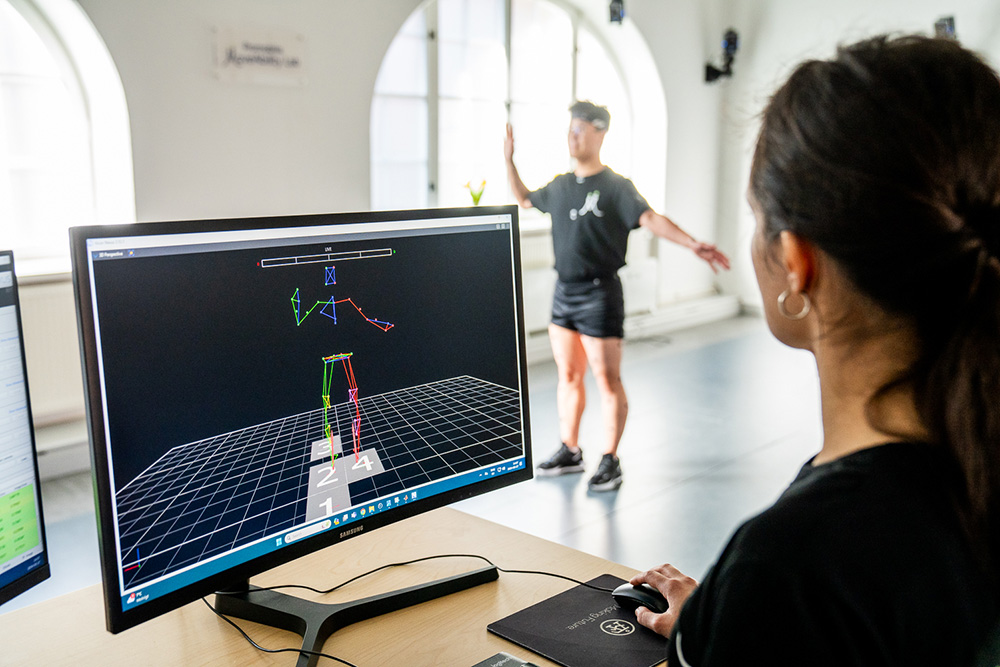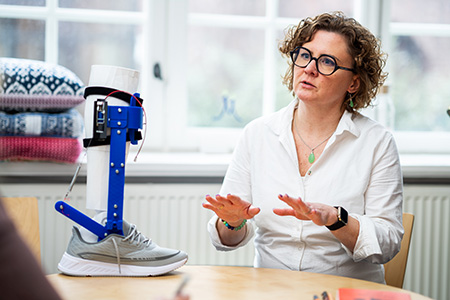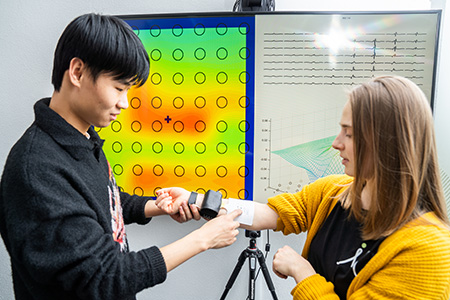Medtech providing more mobility in life

Health in focus
The Promobilia MoveAbility Lab at KTH focuses on mapping the body's movements, identifying opportunities to increase mobility and different types of assistive devices.
The lab simulates, studies and analyses human mobility, the body's machinery and the advanced interaction between the brain, muscles, joints and tissues that make for example a leg bend and move forward.
This is in order to build assistive devices and find methods to strengthen the ability to move that can make life easier for people with motor disabilities.
Two worlds meet
“It can be about people who have had a stroke or someone with a spinal cord injury, for example, and how to find ways to strengthen the individual's ability to move,” says Lanie Gutierrez Farewik , professor of biomechanics and director of the lab.

She is a mechanical engineer and has a PhD in orthopedics from Karolinska Institutet and has previously worked in a children's hospital. After almost 20 years at KTH, she has managed to bring the two worlds together in the Promobilia MoveAbility Lab.
“The marriage of engineering and clinical expertise can be summarized as follows,” Gutierrez Farewik says.
In the lab, work is in full swing. It measures oxygen uptake, the brain's connections to our muscles, human movement patterns and much more. In one part of the large hall, movement patterns are studied using sensors and various cameras. On the screen behind, a graphic image appears that looks like a three-dimensional stick figure.
Interaction between nerves
It can be used to map and decode the intricate interplay between sensory, motor and brain functions. Balance, stability and movement patterns are some of the data collected and processed in different ways. How muscle function and tissues change after a brain or nerve injury is also analyzed. One example of this is the research carried out by the lab's deputy director. Ruoli Wang , Associate Professor of Biomechanics, who is the lab's expert on muscle tissue.

“We work a bit differently here. As an engineer, you are quick to find smart solutions and apply them to problems, but here we start by analysing the problems and collecting data before proposing solutions based on each individual's needs, ” Gutierrez Farewik says.
During the interview, she shows an ankle exoskeleton that can help the user gain extra speed and momentum in the steps by helping weakened calf muscles.
“This can help anyone - even those who are going to hike Machu Picchu," as one of our postdocs says”.
For the future, she hopes for increased capacity to analyze the consequenses of different diseases and to develop and deliver more assistive devices for children and adults among users.
“I think we can achieve a lot here by cooperating even more closely with the healthcare sector. Our smart ideas and their good advice are a good mix,” Gutierrez Farewik says.
Text: Jill Klackenberg

